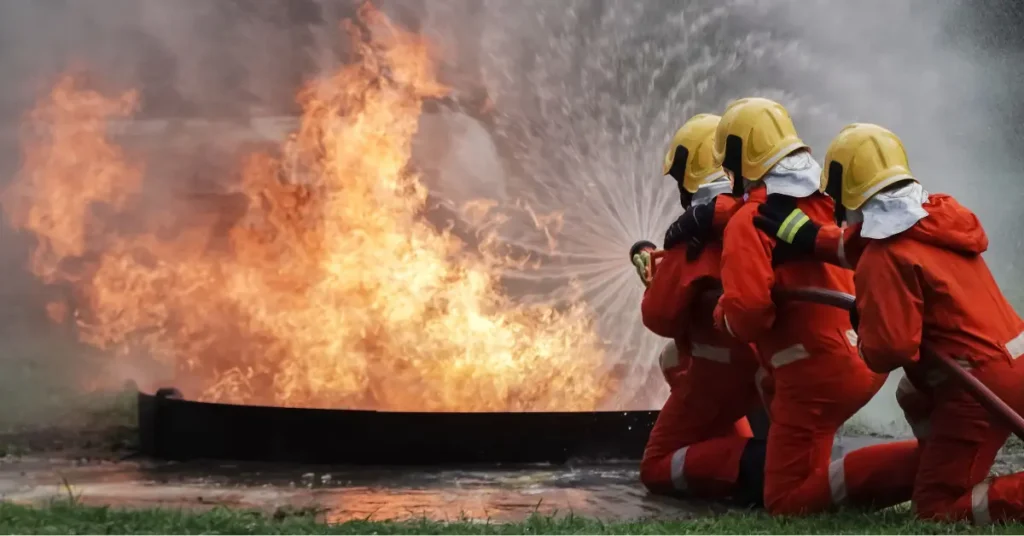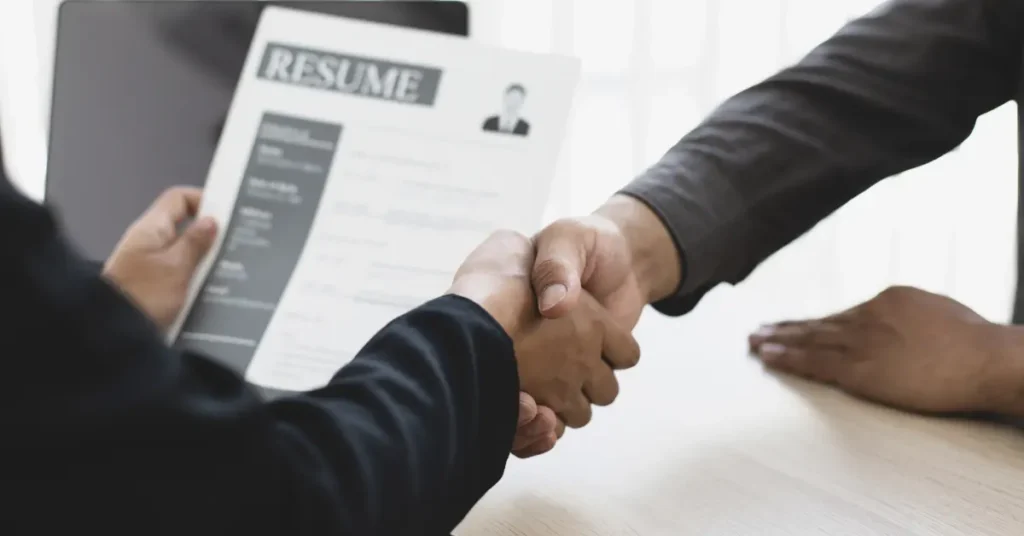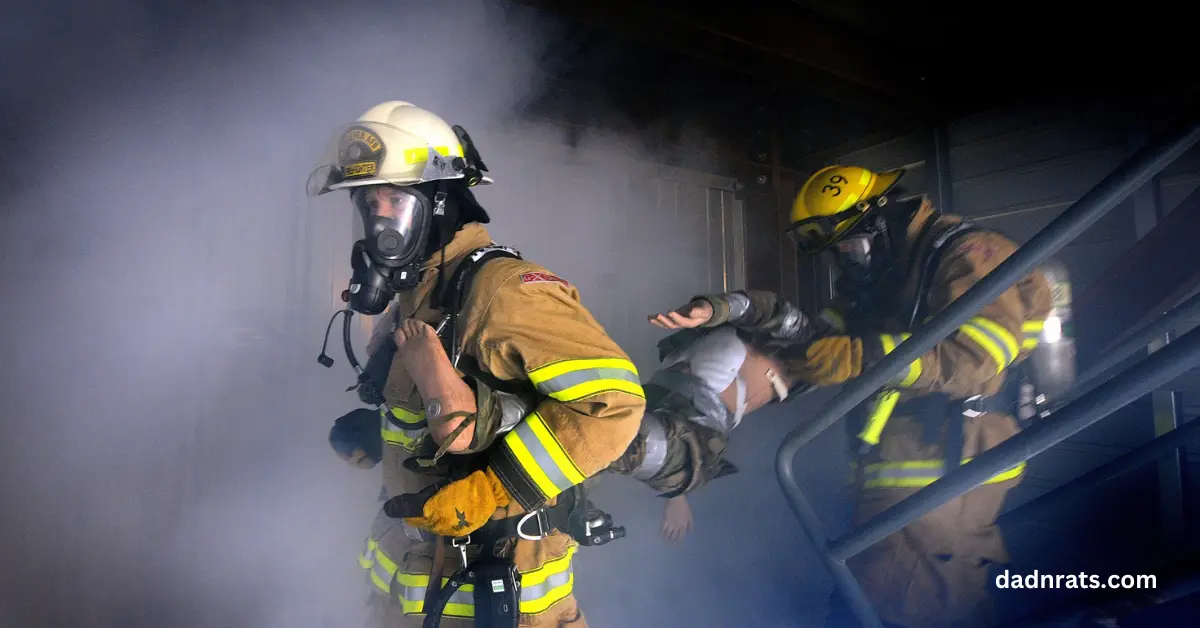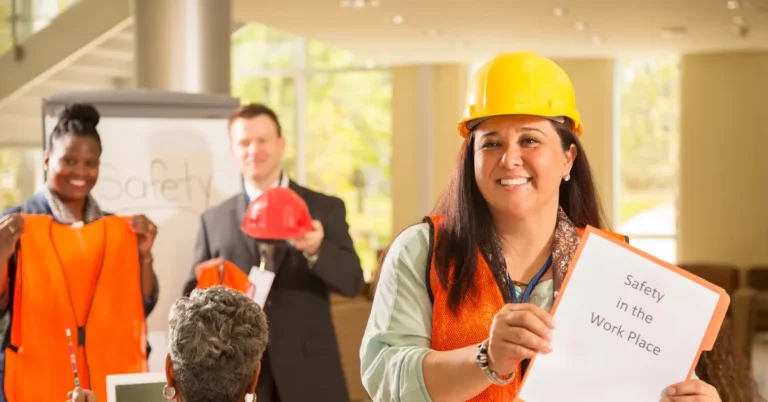Top 50 Questions to Prepare For Firefighters Interview
Preparing for a firefighter interview can be nerve-wracking, especially when you’re faced with a wide range of questions that test your knowledge, skills, and experience. Whether you’re a seasoned firefighter or a candidate looking to break into the field, mastering the art of answering interview questions is crucial for landing your dream job.
In this post, we’ll dive into 50 common firefighter interview questions that you’re likely to encounter during your job interview. From discussing your motivation for joining the fire service to handling stressful situations and demonstrating your problem-solving abilities, we’ll cover it all. So, grab a pen and paper, and let’s get ready to ace your firefighter interview!
Firefighters Interview Questions & Answers
Here are 50 commonly asked questions along with suggested answers:
Question 1. Tell us about yourself and why you want to become a firefighter?
Answer: “I’ve always been drawn to professions where I can make a meaningful difference in people’s lives. Firefighting combines my passion for helping others with the adrenaline rush of facing challenges head-on.”
Question 2. What do you understand about the role of a firefighter?
Answer: “As a firefighter, my primary role is to protect life, property, and the environment from fires and other emergencies. This involves not only fighting fires but also responding to medical emergencies, rescuing people from dangerous situations, and educating the community on fire safety.”
Question 3. How do you handle stressful situations?
Answer: “I thrive under pressure by staying calm, focused, and relying on my training and experience to make quick decisions. I understand the importance of remaining level-headed during emergencies to ensure the safety of myself and others.”
Question 4. Can you describe a time when you had to work as part of a team to achieve a goal?
Answer: “During my time [mention relevant experience], I worked closely with my team to [describe the situation and goal]. By effectively communicating, delegating tasks, and supporting each other, we successfully [describe the outcome].”
Question 5. What motivates you to work in a high-risk environment like firefighting?
Answer: “The opportunity to serve my community and make a positive impact is my biggest motivation. Knowing that my actions can potentially save lives and protect property gives me a sense of purpose and fulfillment.”
Question 6. How do you stay physically fit and mentally prepared for the demands of firefighting?
Answer: “I prioritize regular exercise, including strength training, cardio, and flexibility exercises, to maintain my physical fitness. Additionally, I practice mindfulness techniques and participate in mental health activities to ensure I’m mentally prepared for the challenges of firefighting.”
Question 7. Can you discuss a time when you had to adapt to a rapidly changing situation?
Answer: “During an emergency response, circumstances can change rapidly, requiring quick thinking and adaptability. In [describe the situation], I had to adjust my approach on the fly to ensure the safety of everyone involved.”
Question 8. How do you handle conflicts or disagreements within a team?
Answer: “Open communication and a willingness to listen to different perspectives are key to resolving conflicts within a team. I strive to understand the concerns of all team members and work towards finding a mutually acceptable solution.”
Question 9. What steps do you take to ensure your own safety and the safety of your team during firefighting operations?
Answer: “Safety is always my top priority. I follow established protocols and procedures, continuously assess risks, communicate effectively with my team, and use personal protective equipment to minimize hazards and ensure everyone’s safety.”
Question 10. How do you prioritize tasks during an emergency response?
Answer: “I prioritize tasks based on the severity of the situation, the potential impact on life and property, and the resources available. By assessing the situation quickly and making informed decisions, I ensure that critical tasks are addressed first.”

Question 11. Describe a challenging situation you faced in your previous firefighting experience and how you overcame it.
Answer: “In [mention situation], we encountered [describe the challenge]. By remaining calm, communicating effectively with my team, and leveraging our training and experience, we were able to overcome the challenge and successfully complete the mission.”
Question 12. How do you handle criticism or feedback from supervisors or colleagues?
Answer: “I view criticism as an opportunity for growth and improvement. I welcome constructive feedback, reflect on it, and use it to enhance my skills and performance. I believe in continuous learning and strive to better myself with each experience.”
Question 13. Can you discuss a time when you had to make a split-second decision during an emergency response?
Answer: “During [mention situation], I had to make a quick decision to [describe action]. By relying on my training, experience, and instinct, I made the best decision possible given the circumstances, ultimately ensuring the safety of everyone involved.”
Question 14. How do you handle the emotional toll of witnessing traumatic events?
Answer: “I recognize the importance of self-care and seeking support when dealing with the emotional toll of firefighting. I utilize resources such as counseling services, peer support groups, and debriefing sessions to process my emotions and maintain my mental well-being.”
Question 15. How do you maintain composure and focus during chaotic situations?
Answer: “Maintaining composure during chaotic situations comes down to mental discipline and practice. I focus on controlling my breathing, staying task-oriented, and trusting my training to guide me through the situation.”
Question 16. Can you discuss a time when you had to perform under extreme pressure?
Answer: “During [mention situation], I was faced with [describe the high-pressure scenario]. By staying calm, prioritizing tasks, and trusting in my abilities, I was able to perform effectively and achieve a successful outcome.”
Question 17. How do you handle situations where your safety is at risk?
Answer: “In situations where my safety is at risk, I prioritize following established safety protocols, communicating with my team, and taking appropriate precautions to mitigate risks. If necessary, I will remove myself from the situation to ensure my safety.”
Question 18. What do you believe are the most important qualities for a firefighter to possess?
Answer: “Courage, resilience, teamwork, adaptability, and a commitment to public service are essential qualities for a firefighter. These traits enable us to effectively respond to emergencies and protect our communities.”
Question 19. How do you ensure effective communication during emergency operations?
Answer: “Clear and concise communication is crucial during emergency operations. I utilize radio protocols, hand signals, and verbal cues to relay information to my team and coordinate our efforts effectively.”
Question 20. Can you discuss a time when you had to perform a rescue operation?
Answer: “During [mention situation], I was tasked with performing a rescue operation to [describe the rescue scenario]. By working closely with my team and leveraging our training and equipment, we were able to successfully rescue the individual in need.”
Question 21. How do you handle situations where there is a language barrier with victims or bystanders?
Answer: “In situations where there is a language barrier, I rely on non-verbal communication techniques, such as gestures and body language, to convey information. Additionally, I may utilize translation services or seek assistance from bilingual individuals to ensure effective communication.”
Question 22. How do you prioritize the safety of civilians during emergency operations?
Answer: “The safety of civilians is always our primary concern during emergency operations. We prioritize evacuating individuals from danger, providing medical assistance as needed, and ensuring that everyone is accounted for before focusing on other tasks.”
Question 23. Can you discuss a time when you had to provide medical assistance to a victim?
Answer: “During [mention situation], I administered [describe medical assistance provided] to the victim. By quickly assessing the situation, applying my medical training, and working collaboratively with EMS personnel, we were able to stabilize the individual and facilitate their transport to a medical facility.”
Question 24. How do you handle situations where there are multiple competing priorities?
Answer: “In situations where there are multiple competing priorities, I prioritize tasks based on their urgency and potential impact.
I communicate effectively with my team, delegate responsibilities as needed, and adapt to changing circumstances to ensure that all critical tasks are addressed.”
Question 25. What steps do you take to maintain situational awareness during emergency operations?
Answer: “Maintaining situational awareness is essential for effective decision-making during emergency operations. I continuously scan my surroundings, monitor radio communications, and stay informed of changing conditions to ensure that I have a clear understanding of the situation at all times.”
Question 26. How do you handle the physical demands of firefighting?
Answer: “I maintain a rigorous fitness regimen to ensure that I am physically prepared for the demands of firefighting. This includes strength training, cardiovascular exercise, and flexibility training to improve my overall fitness and reduce the risk of injury on the job.”
Question 27. Can you discuss a time when you had to improvise during an emergency response?
Answer: “During [mention situation], we encountered [describe the challenge]. By thinking creatively, leveraging available resources, and working collaboratively with my team, we were able to improvise a solution and successfully address the situation.”
Question 28. How do you handle situations where there is a lack of resources or equipment?
Answer: “In situations where resources or equipment are limited, I focus on maximizing the effectiveness of the resources available to me. This may involve improvising with alternative tools or techniques, prioritizing tasks, and collaborating with neighboring departments to obtain additional support.”
Question 29. Can you discuss a time when you had to lead a team during an emergency response?
Answer: “During [mention situation], I was tasked with leading a team to [describe the objective]. By providing clear direction, delegating tasks effectively, and fostering open communication, we were able to coordinate our efforts and achieve our goals.”
Question 30. How do you handle situations where there is uncertainty or ambiguity?
Answer: “In situations where there is uncertainty or ambiguity, I rely on my training, experience, and critical thinking skills to make informed decisions. I gather as much information as possible, consult with my team, and adapt to changing circumstances to ensure the best possible outcome.”
Question 31. How do you stay current with advancements in firefighting techniques and technologies?
Answer: “I prioritize ongoing training and professional development to stay current with advancements in firefighting techniques and technologies. This includes attending workshops, participating in drills and exercises, and staying informed of industry trends and best practices.”
Question 32. Can you discuss a time when you had to communicate with individuals in a leadership role during an emergency response?
Answer: “During [mention situation], I communicated with [describe the individual in a leadership role] to provide updates on the situation and request additional resources as needed. By maintaining clear and concise communication, we were able to effectively coordinate our efforts and address the emergency.”
Question 33. How do you handle situations where there is resistance or hostility from bystanders?
Answer: “In situations where there is resistance or hostility from bystanders, I remain calm, professional, and empathetic. I strive to de-escalate tensions through effective communication, active listening, and by addressing concerns in a respectful manner.”
Question 34. Can you discuss a time when you had to assist other emergency response agencies during a large-scale incident?
Answer: “During [mention situation], I collaborated with [describe the other emergency response agencies involved] to [describe the assistance provided]. By working together seamlessly, we were able to effectively manage the incident and ensure the safety of everyone involved.”
Question 35. How do you handle situations where there is limited visibility or hazardous conditions?
Answer: “In situations where there is limited visibility or hazardous conditions, I rely on my training, experience, and equipment to navigate safely. This may involve using thermal imaging cameras, breathing apparatus, and other specialized tools to maintain situational awareness and mitigate risks.”

Question 36. Can you discuss a time when you had to communicate with individuals with disabilities or special needs during an emergency response?
Answer: “During [mention situation], I encountered individuals with [describe disabilities or special needs]. By adapting my communication style, providing reassurance, and offering assistance as needed, we were able to ensure their safety and well-being during the emergency.”
Question 37. How do you handle situations where there is a language barrier within your own team?
Answer: “In situations where there is a language barrier within my own team, I prioritize clear and concise communication to ensure that everyone understands their roles and responsibilities. I may utilize translation services or seek assistance from bilingual team members to facilitate effective communication.”
Question 38. Can you discuss a time when you had to manage multiple incidents simultaneously?
Answer: “During [mention situation], I was responsible for managing multiple incidents simultaneously. By prioritizing tasks, delegating responsibilities, and maintaining open communication with my team, we were able to effectively coordinate our efforts and address each incident in a timely manner.”
Question 39. How do you handle situations where there is a lack of coordination among emergency response agencies?
Answer: “In situations where there is a lack of coordination among emergency response agencies, I prioritize establishing clear lines of communication and fostering collaboration. By proactively reaching out to other agencies, sharing information, and coordinating our efforts, we can ensure a unified response to the emergency.”
Question 40. Can you discuss a time when you had to provide assistance to vulnerable populations during an emergency response?
Answer: “During [mention situation], I provided assistance to [describe the vulnerable population]. By demonstrating compassion, empathy, and sensitivity to their needs, we were able to ensure their safety and well-being during the emergency.”
Question 41. How do you handle situations where there are cultural differences or misunderstandings?
Answer: “In situations where there are cultural differences or misunderstandings, I strive to approach each individual with respect, empathy, and an open mind. I make an effort to understand their cultural background, communicate effectively, and address any misunderstandings in a respectful manner.”
Question 42. Can you discuss a time when you had to navigate challenging terrain during an emergency response?
Answer: “During [mention situation], we encountered challenging terrain such as [describe the terrain]. By leveraging our training, equipment, and teamwork, we were able to navigate the terrain safely and effectively complete our mission.”
Question 43. How do you handle situations where there are hazardous materials involved?
Answer: “In situations where there are hazardous materials involved, I prioritize safety protocols, such as establishing a perimeter, identifying the hazards, and coordinating with hazardous materials teams. I rely on my training and experience to mitigate risks and ensure the safety of everyone involved.”
Question 44. Can you discuss a time when you had to provide assistance to individuals with mental health issues during an emergency response?
Answer: “During [mention situation], I encountered individuals with mental health issues who required assistance. By demonstrating patience, empathy, and understanding, we were able to de-escalate the situation and ensure that they received the appropriate care and support.”
Question 45. How do you handle situations where there are animals in distress during an emergency response?
Answer: “In situations where there are animals in distress, I prioritize their safety and well-being alongside human life. I work collaboratively with animal control agencies or veterinarians to provide assistance and ensure that the animals are cared for appropriately during the emergency.”
Question 46. Can you discuss a time when you had to assist individuals with mobility impairments during an emergency response?
Answer: “During [mention situation], I encountered individuals with mobility impairments who required assistance. By providing support, reassurance, and accommodations as
needed, we were able to ensure their safety and facilitate their evacuation from the area.”
Question 47. How do you handle situations where there are limited resources for fire suppression?
Answer: “In situations where there are limited resources for fire suppression, I prioritize effective resource management and strategic deployment of available assets. This may involve utilizing alternative firefighting techniques, coordinating mutual aid from neighboring departments, and implementing fire prevention measures to mitigate the spread of the fire.”
Question 48. Can you discuss a time when you had to coordinate with local authorities during an emergency response?
Answer: “During [mention situation], I collaborated with local authorities such as [describe the agencies or officials involved] to coordinate our response efforts. By maintaining open communication, sharing information, and working together towards a common goal, we were able to effectively manage the emergency.”
Question 49. How do you handle situations where there is a lack of public cooperation during an emergency response?
Answer: “In situations where there is a lack of public cooperation, I strive to educate and inform the public about the importance of following instructions and cooperating with emergency responders. By building trust, addressing concerns, and providing clear guidance, we can work together to ensure the safety of everyone involved.”
Question 50. Can you discuss a time when you had to provide assistance to individuals who were displaced by a fire or other emergency?
Answer: “During [mention situation], I provided assistance to individuals who were displaced by [describe the emergency]. By offering support, resources, and guidance, we were able to help them navigate the challenges they faced and begin the process of rebuilding their lives.”


